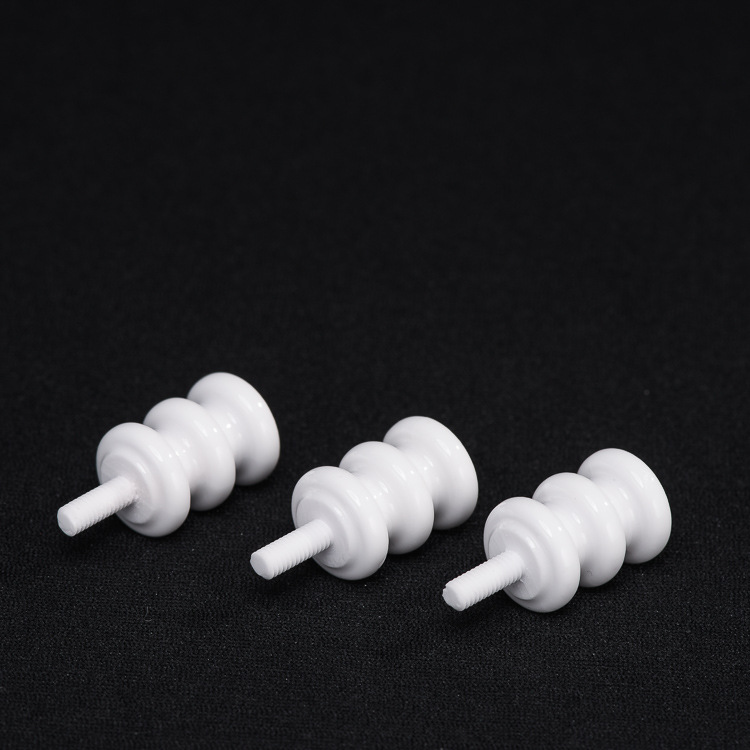Alumina ceramic stands out as one of the cornerstones of modern technology, thanks to their remarkable combination of physical, chemical, and thermal properties. Composed primarily of aluminum oxide (Al2O3) these ceramics are celebrated for their outstanding combination of physical, chemical, and thermal characteristics that have made them essential across industries ranging from aerospace to automotive and biomedicine. Alumina ceramics’ versatility has also made them subject to ongoing research and development efforts; therefore this article delves deeper into these unique properties of alumina ceramics; its applications, benefits, future potential that makes them cornerstones of advanced material sciences.
Robust Mechanical Strength and Hardness Properties
Alumina ceramics are known for their exceptional hardness and mechanical strength, which make them invaluable in applications requiring wear- and abrasion-resistance. Their Mohs hardness rating of 9 makes alumina ceramics one of the hardest materials available – only diamond surpasses it for this trait! Their inherent hardness makes alumina ceramics suitable for cutting tools, abrasive nozzles, sealing rings or anywhere durability is key – saving both downtime and maintenance costs in industrial operations operations
Superior Thermal Properties for Improved performance.
One of the key characteristics of alumina ceramic is their remarkable thermal resistance, with melting points approaching 2050degC serving as one of their defining traits. Utilized as kiln linings, thermocouple tubes, furnace fixtures or as thermal barrier coatings on engines or turbines in high-temperature settings like aerospace manufacturing or automotive assembly lines alumina ceramics are an integral component. Their excellent thermal insulation properties help them remain operational under extreme temperatures with industry applications including aerospace manufacturing or automotive assembly lines requiring reliable performance under high temperature environments like aerospace or automotive production.
Electrical Insulation Capabilities
Alumina ceramics boast excellent electrical insulation properties, with high dielectric strength and low conductivity – qualities which make them the perfect material for electrical insulators, substrates for electronic circuits, components in vacuum tubes and much more. In the electronics industry where reliable insulation is essential to safety and functionality, alumina ceramics have proven themselves as ideal products thanks to their ability to remain performing despite changes in environmental conditions or frequencies.
Chemical Stability and Corrosion Resistance of Aluminum Alloys
Chemical inertness of alumina ceramics makes them a formidable material choice in harsh environments, unlike many metals or polymers. Alumina ceramics’ ability to withstand corrosion from acids and alkalis makes them suitable for medical implants, chemical processing equipment and protective coatings in areas with constant chemical exposure – including medical implants and protective coatings in medical practices where chemicals must be handled regularly. Their long service life with minimum maintenance requirements allows chemical processing companies to run more efficiently than ever.
Biocompatibility and Medical Applications
Biomedically speaking, alumina ceramics’ biocompatibility makes them an excellent choice for various implants such as hip and knee replacements. Their smooth surfaces, low friction coefficient, wear resistance and lack of degradation or inflammation associated with metallic implants is reduced thanks to alumina’s integration into bone tissue without adverse reactions and long-term success of surgery outcomes; making alumina the go-to material in orthopedic applications.
Manufacturing Flexibility and Design Versatility
Alumina ceramics’ manufacturability offers great design flexibility for custom applications. Innovative manufacturing techniques such as dry pressing, isostatic pressing and injection molding enable complex shapes and sizes tailored to specific requirements; thanks to this versatility in both design and manufacturing alumina ceramics are widely used across industries for everything from electronic devices to robust mechanical systems.
Environment Impact and Sustainability.
Alumina ceramics contribute greatly to environmental sustainability efforts, from their long lifespan and durability reducing waste to being recyclable – not to mention helping energy intensive sectors lower greenhouse gas emissions with thermal insulation made of these ceramics.
Challenges and Future Directions of Aviation Technology.
Although alumina ceramics boast many advantages, they do have certain drawbacks such as brittleness and limited shock resistance that could limit their use in impactful environments. Research efforts are currently focused on finding ways to address these flaws using composite materials or novel fabrication techniques that increase toughness without jeopardizing inherent strengths of these ceramics.
Conclusion / Abstract
Alumina ceramic is an impressive example of modern material science, offering properties essential for both current and future technological applications. Hardness, thermal stability, electrical insulation properties, chemical resistance and biocompatibility make them indispensable in many high-stakes industries. As research continues to open up new horizons for alumina ceramics, they will play an even larger role in driving innovation, improving industrial efficiency, and supporting global sustainability initiatives. Their development represents not just material perfection but redefining modern technology’s capabilities as a whole.
